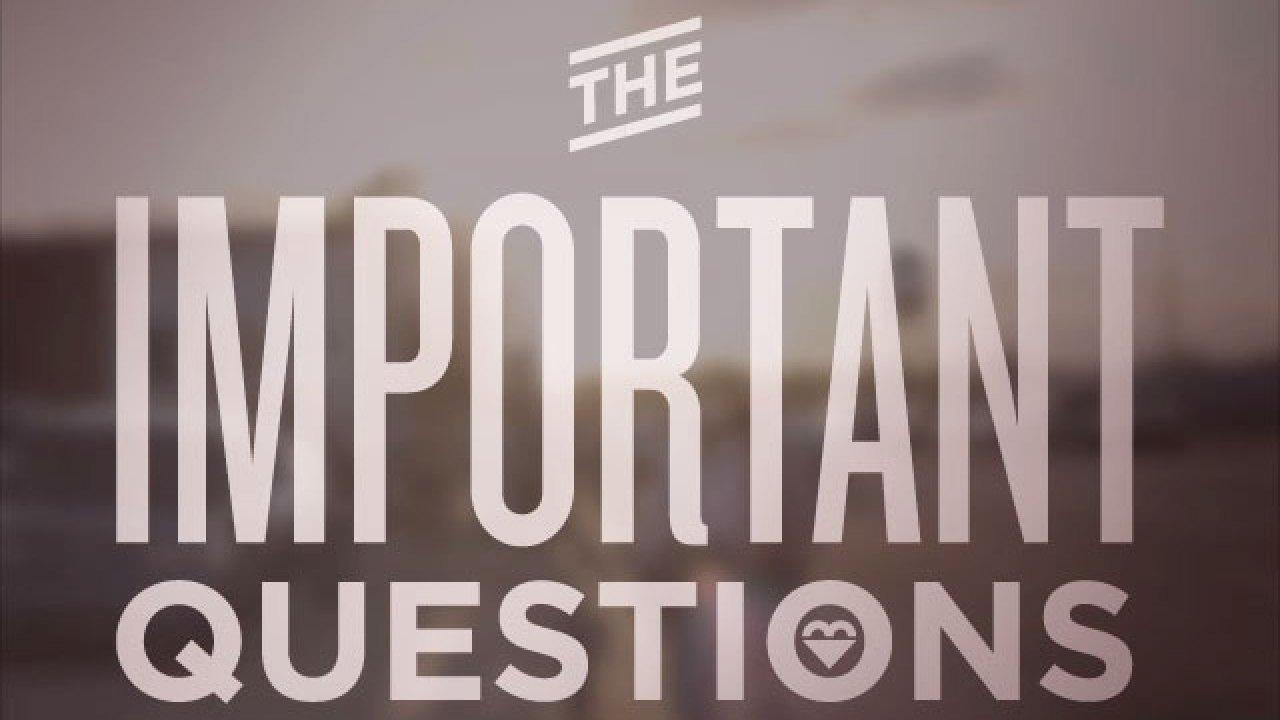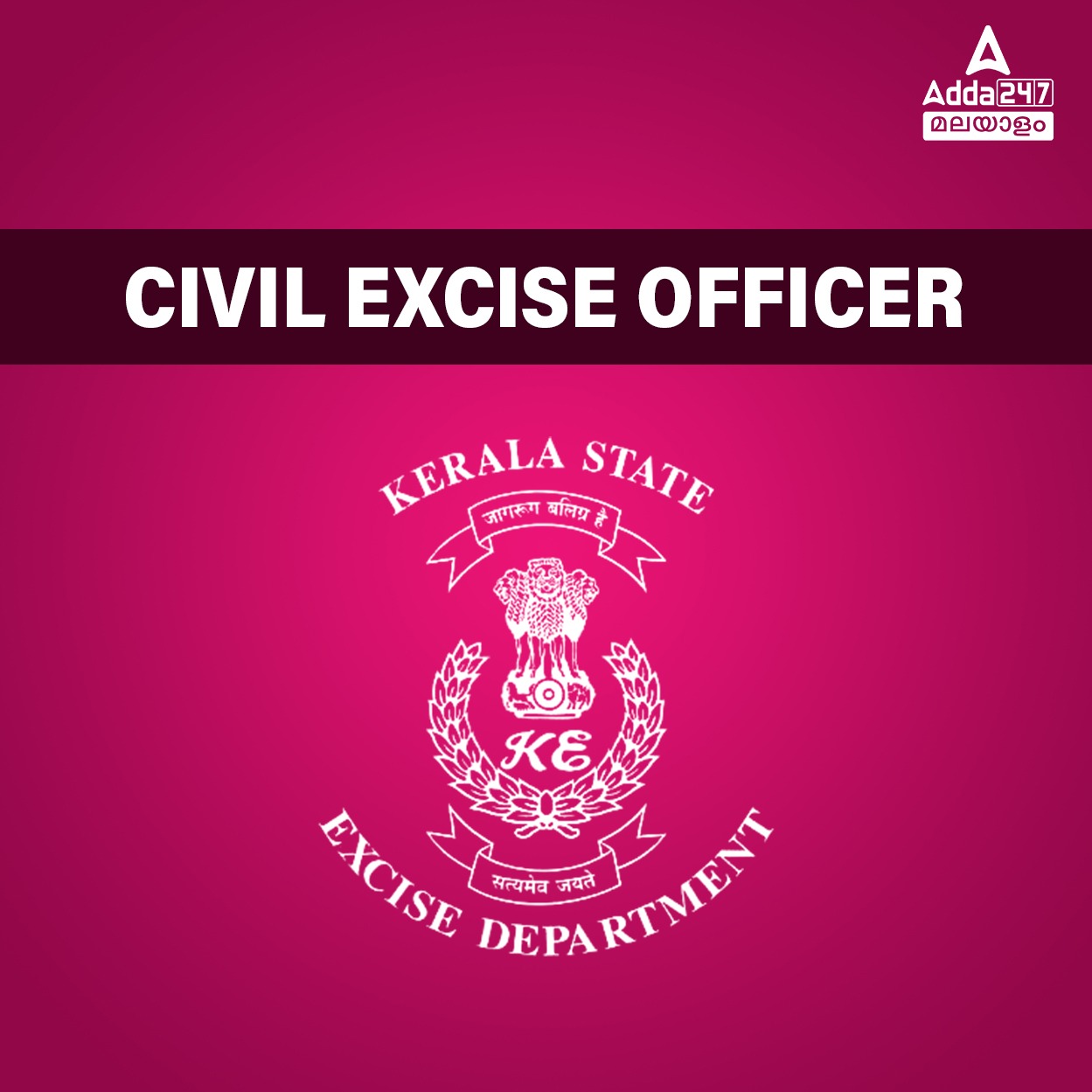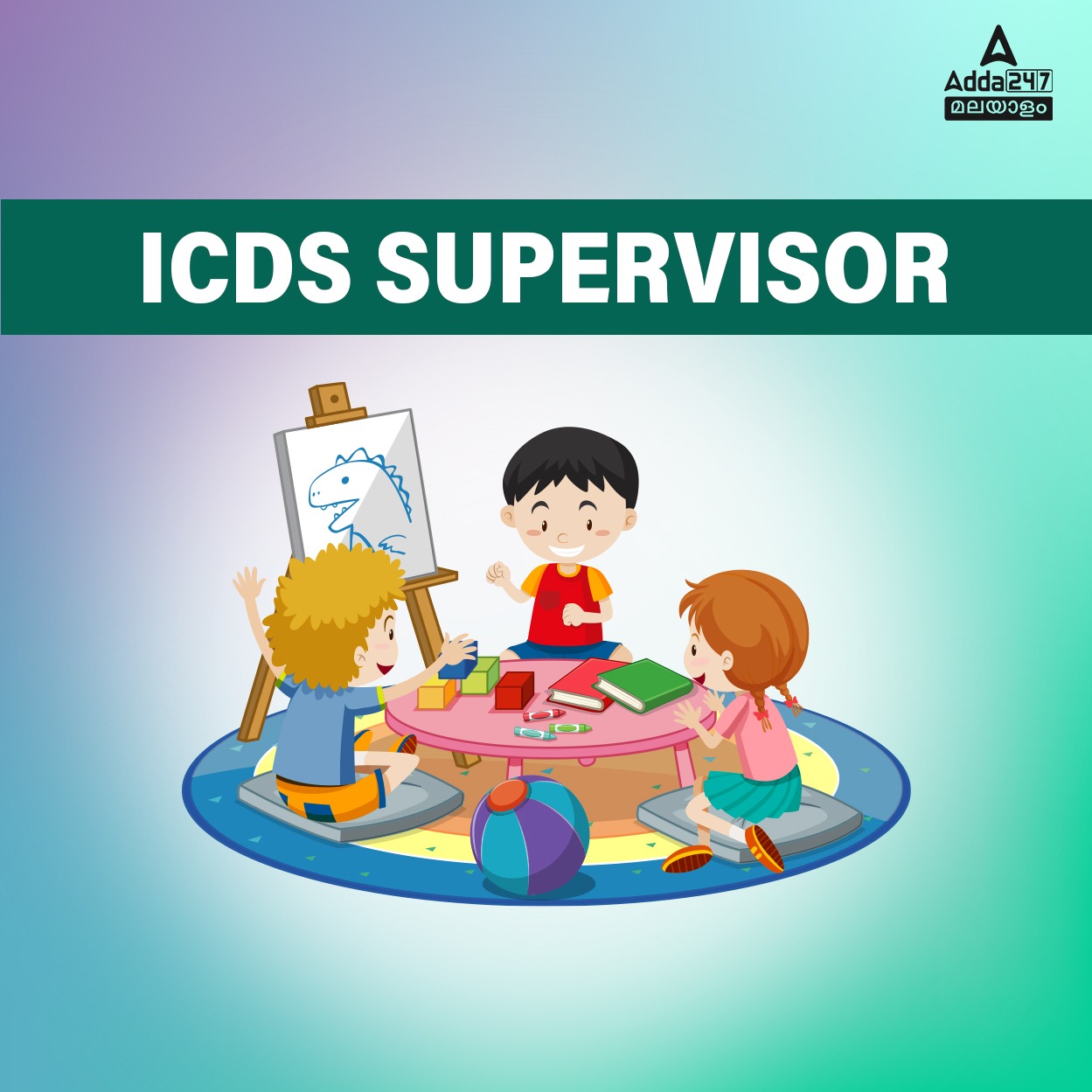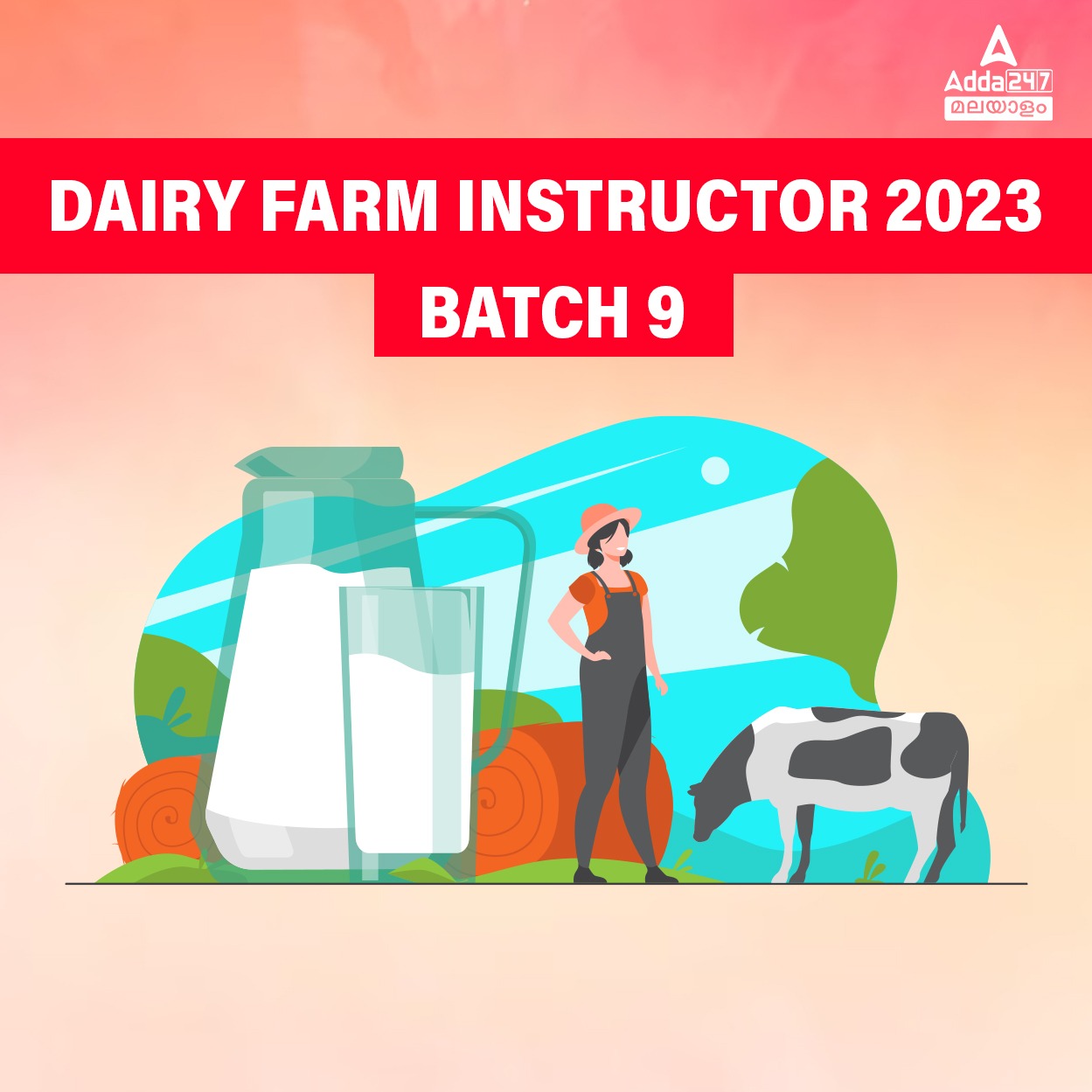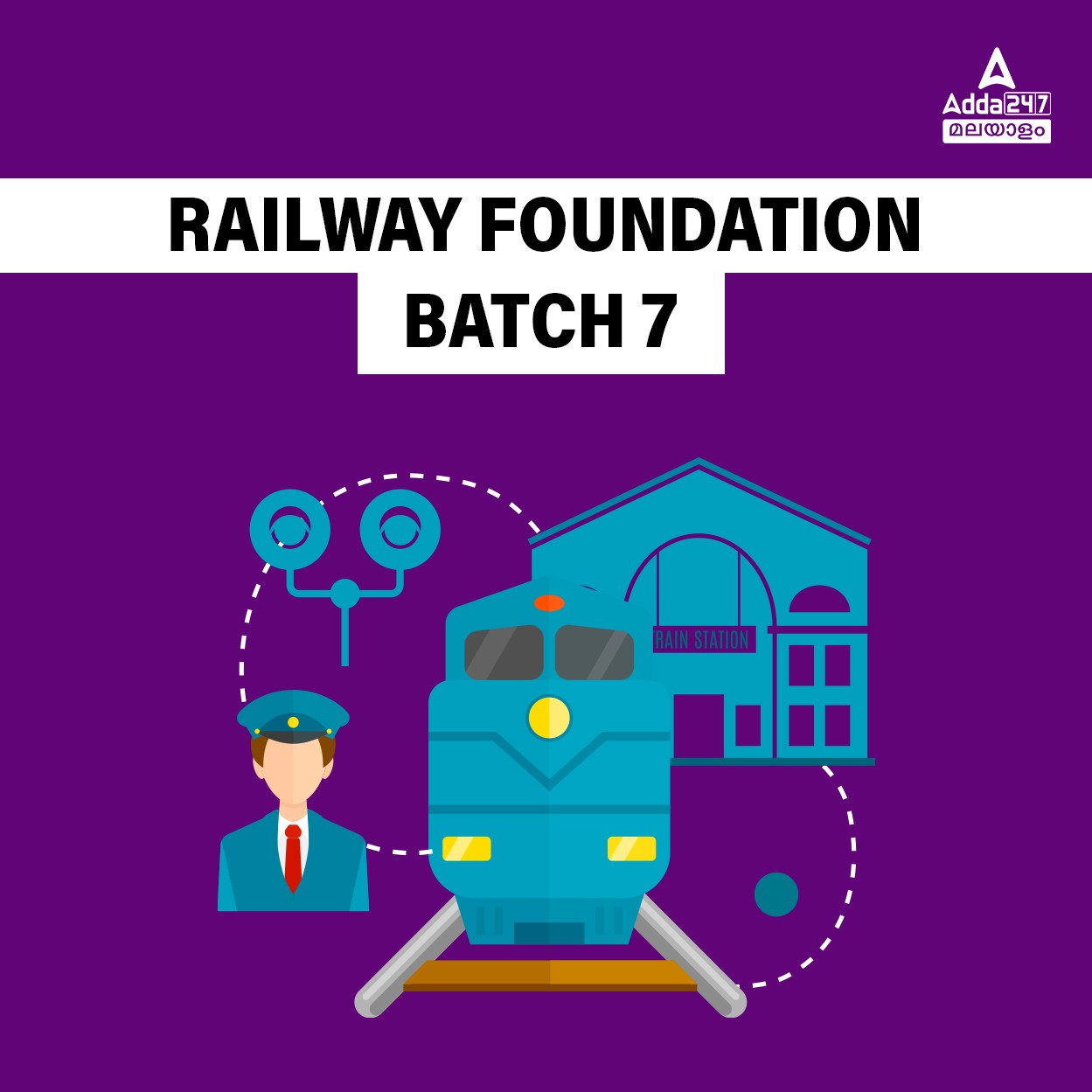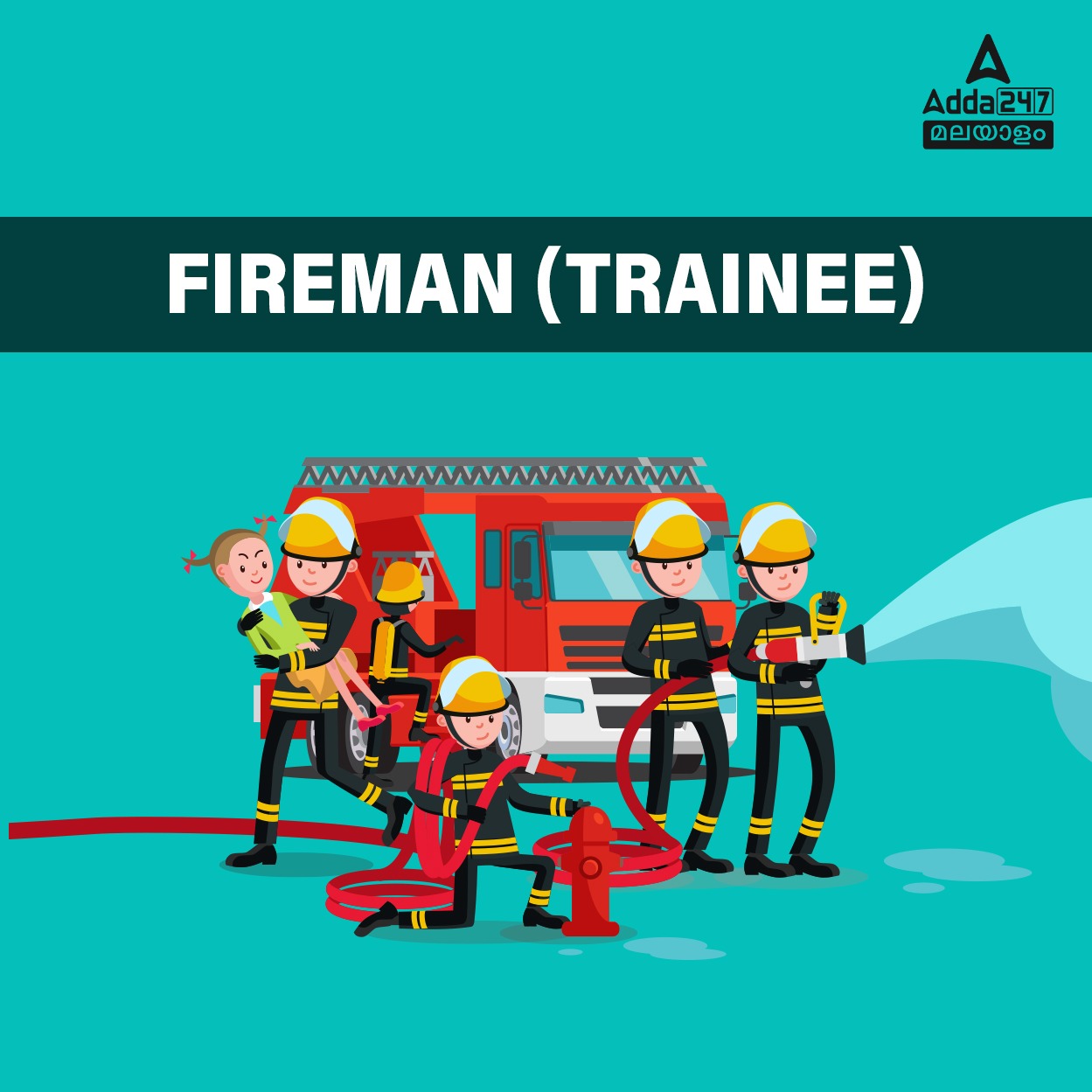Table of Contents
25 Important Previous year Q & A | Civil Police Officer Study Material [2 December 2021]: CPO പരീക്ഷകൾക്ക് വിജയം നേടാൻ ധാരാളം മുൻകാല ചോദ്യപേപ്പറുകൾ വിശകലനം ചെയ്യേണ്ടതുണ്ട്. CPO ലേക്ക് ഒരു ജോലി എന്ന സ്വപ്നം പൂവണിയാൻ ശ്രമിക്കുന്ന എല്ലാ ഉദ്യോഗാർത്ഥികൾക്കും ഇനി വരാൻ പോകുന്ന പരീക്ഷകളെ ധൈര്യത്തോടെ നേരിടാൻ ഞങ്ങളിതാ നിങ്ങൾക്കായി മുൻകാല വർഷങ്ങളിലെ ചോദ്യപേപ്പറുകളിൽ നിന്നും പ്രധാനപ്പെട്ട ചോദ്യങ്ങൾ തിരഞ്ഞെടുത്തു അവയുടെ ഉത്തരങ്ങളും വിശദീകരണത്തോടെ നൽകിയിരിക്കുന്നു. മുൻകാല വർഷങ്ങളിലെ 25 ചോദ്യങ്ങളും , അവയുടെ ഉത്തരങ്ങളും (25 Important Previous year Q & A) ചുവടെ കൊടുത്തിരിക്കുന്നു.
Fill the Form and Get all The Latest Job Alerts – Click here
[sso_enhancement_lead_form_manual title=”നവംബർ 2021 ആഴ്ചപ്പതിപ്പ് | സമകാലിക വിവരങ്ങൾ
November 4th week” button=”ഡൗൺലോഡ് നൗ” pdf=”/jobs/wp-content/uploads/2021/11/29184454/Weekly-Current-Affairs-4th-week-November-2021-in-Malayalam.pdf”]
Civil Police Officer Study Material: 25 Important Previous year Questions (25 ചോദ്യങ്ങൾ)
- Who was given the title of Kavithilakam’ by Maharaja of Cochi ?
(A) Vagbhadananda (B) Pandit Karuppan
(C) Kumara Guru (D) Kumaranasan
- The book ‘Moksha Pradeepam’ is authored by ?
(A) Brahmananda Sivayogi (B) Vaikunta Swamikal
(C) Sree Narayana Guru (D) Vagbhadananda
- Where is the first branch of ‘Brahma Samaj’ started in Kerala ?
(A) Kochi (B) Palakkad
(C) Kannur (D) Kozhikode
- The only one district in Kerala produce tobacco ?
(A) Wayanad (B) Idukki
(C) Kasargod (D) Kannur
- On which of the following rivers is Ukai dam located ?
(A) Ravi (B) Narmada
(C) Beas (D) Tapti
- 6. Chutak Hydro-Electric project being constructed by NHPC in Kargil is on the river ?
(A) Suru (B) Jhelum
(C) Kunar (D) Ravi
- Considering sea transport, GPS stands for ?
(A) Greenwich Placement Systems
(C) German Placement Systems
(B) Global Placement Systems
(D) Global Positioning Systems
- Anshi National Park is situated in the state of ?
(A) Andhra Pradesh (B) Tripura
(C) Karnataka (D) Tamil Nadu
- Which was the first Indian Private Airline to launch flights to China ?
(A) Sahara Airlines (B) Indigo
(C) Kingfisher Airlines (D) Jet Airways
- National Research Centre for Banana is located at ?
(A) Thiruvananthapuram (B) Trichy
(C) Bangalore (D) Tirupur
Read More: Kerala PSC Plus Two (12th) Level Prelims Result 2021
- Pagal Panthi Movement was of ?
(A) Garo (B) Naga
(C) Paharia (D) Santhal
- Which among the following states of India was ruled by the Ahom dynasty ?
(A) Tripura (B) Nagaland
(C) Assam (D) Manipur
- Which mountain range separates the Indo-Gangetiç Plain from Deccan Plateau ?
(A) The Sahyadri (B) The Vindhyas
(C) The Aravalli (D) The Satpura
- The tidal port of India ?
(A) Visakhapatnam (B) Cochin
(C) Kandla (D) Mumbai
- The Jarawas was tribal people of ?
(A) Meghalaya (B) Andaman group of Islands
(C) Madhya Pradesh (D) Bihar
- Who among the Delhi Sultans was known as Lakh Baksh ?
(A) Qutb-ud-din-aibak (B) Balban
(C) Sikandar Lodi (D) Iltutmish
- The Indian classical music work Ragdarpan was translated into Persian during the reign of ?
(A) Shahjahan (B) Akbar
(C) Firuz Tughlaq (D) Muhammad bin Tughlaq
- The Indian Institute of Horticulture Research is located at which among the following ?
(A) Bhopal (B) Ranchi
(C) Shimla (D) Bangalore
- The treaty of Seaguli defined the relation of British India with which among the following neighbours ?
(A) Afghanistan (B) Nepal
(C) Burma (D) Sri Lanka
- The Regulation XVII passed by the British Government was related to ?
(A) Abolition of Slavery
(B) Suppression of Thugs
(C) Abolition of Caste System
(D) Abolition of Sati
Read More: Kerala PSC Plus Two Level Mains Exam Date 2022
- The Sarabandhi Campaign of 1922 was led by ?
(A) Sukhdev (B) C.R. Das
(C) Motilal Nehru (D) Vallabhbhai Patel
- Digital India Programme was launched on ?
(A) 2014 (B) 2015
(C) 2016 (D) 2017
- Indian Government issued Dowry Prohibition Act in the year ?
(A) 1961 (B) 1964
(C) 1965 (D) 1967
- Where was the Universal Declaration of Human Rights adopted ?
(A) New York (B) London
(C) Paris (D) Zurich
- Who among the following was the Chairman of Fundamental Rights Sub-committee of Constituent Assembly ?
(A) Rajendra Prasad (B) J.B. Kripalani
(C) B.R. Ambedkar (D) Jawahar Lal Nehru

Civil Police Officer Study Material: 25 Important Previous year Solutions (25 പരിഹാരങ്ങൾ)
1. Ans : (B) Pandit Karuppan
Solution : Pandit Karuppan emerged from Ernakulam of Cochin State as a relentless crusader against untouchability and social evils. He was called the “Lincoln” of Kerala for steering socio-economically and educationally backward communities to the forefront. Hailing from a community of inland fishermen who engaged in localised fishing in backwaters and rivers, Karuppan became a Sanskrit scholar, poet and dramatist of repute. As the first human rights activist of the Cochin State, he used his literary skill and organizational ability to combat illiteracy, social injustice, casteism, and superstitions. He campaigned for the empowerment of backward caste people, who at that time were not even permitted to enter Ernakulam. The Maharaja of Cochin honoured Karuppan with the title Kavithilakan or Great Poet. Impressed by Karuppan, Kerala Varma Valiya Koil Thampuran of Travancore, known as Kerala Kalidasan for his translation of Shakunthalam into Malayalam, conferred the title of Vidwan upon him in 1913.
- Ans : (A) Brahmananda Sivayogi
Solution : Brahmananda Swami Sivayogi (26 August 1852 – 10 September 1929), also known as Alathur Shivayogi or Alathur swami, was a sanyasi from Kerala, India who founded the Ananda Maha Sabha in 1918. He proposed Anandadarsam or Anandamadham (religion of bliss). Brahmananda Sivayogi was born on 26 August 1852 at Kollankode, a small village in Palakkad district of Kerala. He was the ninth son of Nani Amma of “Karatt” family and Kunhikrishna Menon of Kunnath Ravunnyarath at Vallengi. He had nine brothers and one sister. He was titled “Brahmananda Swamikal”, recognising his spiritual and literary knowledge by Dr. Ayyathan Gopalan, a social reformer, leader and propagandist of Brahmo Samaj in Kerala and founder of Sugunavardhini movement. He started Sidhdhasramam in Alathur on 1891. He propounded the theory that anandam (happiness or bliss) should be the touchstone of any human activity. The movement he spearheaded played an important role in the Kerala reformation movement.
- Ans : (D) Kozhikode
Solution : Rao Sahib Ayathan Gopalan (5 March 1863 – 2 May 1948), popularly known as “Darsarji”and “Darsar Sahib” (“doctor”), was an Indian physician, writer, philanthropist, social reformer, and Renaissance leader of Kerala. He is the founder of the Sugunavardhini movement and a leader and propagandist of Brahmo Samaj in Kerala. Gopalan worked as a doctor, chief surgeon, and superintendent at several hospitals in South India. He returned to Kerala in 1897 and joined the Calicut Lunatic asylum (now the Kuthiravattom Mental Hospital) as its first Indian superintendent. Meanwhile, caste and racial discrimination, malicious practices, and social injustices were prevalent in Kerala, and atrocities against women and children were at their peak. He instituted Brahmosamaj in Kerala for the first time in 1893. Gopalan extended his reform ideologies and propagated his reform activities by establishing the first branch of Brahmo Samaj. on 17 January 1898 at Calicut. To conduct Samaj’s meetings and prayers, a separate brahmomandir (lit. “hall”)—now Ayathan Gopalan Memorial School. —was opened to the public on 1 October 1900. The brahmomandir was inaugurated by Mana Vikraman Ettan Thampuran, the Zamorin King of Calicut.
- Ans : (C) Kasargod
Solution : In kerala kasaragod dist is the main producer of tobacco. The present study was conducted to investigate the physico chemical properties of soil and concentration of nicotine of tobacco cultivated in different agronomic, climatic and geographical conditions of this district. In India two species of tobacco, Nicotiana tabacum and Nicotiana rustica are cultivated .Tobacco can grow in different types of soil and in various climates. Kasaragod district is the only one district of Kerala that produce Nicotiana tabacum L. Pullur Periya, Ajanoor and Pallikara panchayath are the main areas of tobacco cultivation of this District. Here Nicotiana tabacum L is cultivated in different agronomic and geographical conditions. UV Spectrophotometric analysis reveals that tobacco cultivated in kuniya region (225 ft MSL) of Pullur Periya panchayath have more nicotine content (0.598mg/g ) due to the nutritive soil present in this region compared to the tobacco(nicotine content 0.466mg/g) cultivated in sea coast area (21 ft MSL) of Pallikara that belongs to Pallikara panchayath. Soil of kuniya region is black have more organic carbon (1.89 %) than soil of Pallikara region (0.1578%). Today’s agricultural report says the position of Kasaragod dist in tobacco cultivation is low than that of other regions. This endemic ecofriendly cultivation must be protected by the welfare of local farmers.
- Ans : (D) Tapti
Solution : The Ukai Dam, constructed across the Tapi River, is the second largest reservoir in Gujarat after the Sardar Sarovar. It is also known as Vallabh Sagar. Constructed in 1972, the dam is meant for irrigation, power generation and flood control. Having a catchment area of about 62,255 km2 and a water spread of about 52,000 hectares, its capacity is almost same as that of the Bhakra Nangal Dam. The site is located 94 km from Surat.The dam is an earth-cum-masonry dam. Its embankment wall is 4,927 m long. Its earth dam is 105.156 meters high, whereas the masonry dam is 68.68 meters high. The dam’s left bank canal feeds water to an area of 1,522 km2. and its right canal provides water to 2,275 km2 of land. A fort built by the Gaekwad dynasty of Baroda was submerged in the reservoir. It can be spotted when water levels in the reservoir goes down.
Read More: Kerala PSC Plus Two Level Mains Syllabus 2022
- Ans : (A) Suru
Solution : The Chutak Hydroelectric Plant is a run-of-the-river power project on the Suru River (a tributary of Indus) in Kargil district in the Indian union territory of Ladakh (231 km (144 mi) from the capital Leh). The barrage of the project is at Sarze village and the powerhouse is located on the right bank of the Suru near Chutak village. The project construction began on 23 September 2006, and the first three generators were commissioned in November 2012. The fourth was commissioned in January 2013. The project includes construction of a 47.5-metre-long (156 ft) barrage, having 15 m height above the crest level, an underground powerhouse, and 3.3 m dia and 10.02 km long head race tunnel and installation of four nos. of vertical Francis turbine of 11 MW each. The project envisages utilizing a gross head of 63.4 m (208 ft) to generate 216.41 GWh in a 90% dependable year with an installed capacity of 44 MW.
- Ans : (D) Global Positioning Systems
Solution : Stands for “Global Positioning System.” GPS is a satellite navigation system used to determine the ground position of an object. GPS technology was first used by the United States military in the 1960s and expanded into civilian use over the next few decades. Today, GPS receivers are included in many commercial products, such as automobiles, smartphones, exercise watches, and GIS devices. The GPS system includes 24 satellites deployed in space about 12,000 miles (19,300 kilometers) above the earth’s surface. They orbit the earth once every 12 hours at an extremely fast pace of roughly 7,000 miles per hour (11,200 kilometers per hour). The satellites are evenly spread out so that four satellites are accessible via direct line-of-sight from anywhere on the globe. A GPS receiver combines the broadcasts from multiple satellites to calculate its exact position using a process called triangulation. Three satellites are required in order to determine a receiver’s location, though a connection to four satellites is ideal since it provides greater accuracy.
- Ans : (C) Karnataka
Solution : Kali Tiger Reserve (formerly Anshi National Park) is a protected area and tiger reserve. It is located in Uttara Kannada district, in Karnataka, India. The forest in the area was declared the Dandeli Wildlife Sanctuary on 10 May 1956. It was renamed to Kali Tiger Reserve in December 2015. The park is a habitat of Bengal tigers, black panthers and Indian elephants, amongst other distinctive fauna. The Kali River flows through the tiger reserve and is the lifeline of the ecosystem and hence the name. The tiger reserve is spread over an area of 1300 square kilometres. The state proposed carving out a section of the sanctuary to form the Anshi national park, which was implemented on 2 September 1987. The initial proposal covered 250 square kilometres. When the final notification of the park area was issued in 2002, it was extended by another 90 square kilometres.
- Ans : (D) Jet Airways
Solution : Naresh Goyal-spearheaded Jet Airways has become the first Indian private air-carrier to operate a service to China with the launch of its Mumbai-Shanghai-San Francisco flight on Saturday.The daily flight was launched by the airline’s Executive Director, Saroj Datta, from the Mumbai International Airport on Saturday. it is an Indian international airline currently based in Delhi NCR with a training and developmental centre in Mumbai. It was one of the largest airline in India, with a 21.2% passenger market share in February 2016. It operated over 300 flights daily to 74 destinations worldwide from its erstwhile main hub at Chhatrapati Shivaji International Airport and secondary hubs at Chennai International Airport, Indira Gandhi International Airport, New Delhi (new primary hub), Kempegowda International Airport, Bengaluru, and Netaji Subhas Chandra Bose International Airport, Kolkata. Incorporated in April 1992 as a limited liability company, the airline began operations as an air taxi operator in 1993. It began full-fledged operations in 1995 with international flights added in 2004.
- Ans : (B) Trichy
Solution : The National Research Centre for Banana (NRCB) was established at Tiruchirapalli, Tamil Nadu in 1994. The Centre is carrying out mission oriented research programme on banana and plantains for resolving the production constraints and to increase the productivity. The Centre has developed post-harvest technologies including value-added products. The Centre has the expertise in modern production technologies for small and marginal banana farmers. Besides it coordinates banana and plantain research with International agencies like INIBAP, France and BAPNET, Philippines.
- Ans : (A) Garo
Solution : Pagal panthi movement was of Hodi, Garo and Hajong tribes. It was led by Hodi leader Janku pathar and Debraj Pathar. The Pagal Panthis were a socio-religious order that emerged in the late 18th century CE in the Mymensingh region of Bengal (now located in Bangladesh). Adherents of a syncretic mixture of Hinduism, Sufism and Animism, the order sought to uphold religious principles and the rights of landless peasants in Bengal; under the leadership of Tipu Shah, the movement soon evolved into a popular, armed struggle against British Raj and the zamindar (landlord) system. It was crushed with the help of the army in 1833. It was a semi religious sect having influence in the northern districts of Bengal. The Pagal Panthis was a religious movement that emerged in the northern Mymensingh and Sherpur District area of the province of Bengal. In contrast to the rest of Bengal, the region was inhabited mainly by tribal peoples such as the Garos, Hajangs, Dalus, Hodis and Rajvangshies, who were mainly adherents of Animism and tribal faiths. The region enjoyed considerable religious harmony and served as a base for religious reform movements such as the Pagal Panthis, an order founded by Karim Shah and other disciples of the Muslim fakir Majnu Shah, the leader of the Madariya Sufi order. After the death of Karim Shah in 1813
- Ans : (C) Assam
Solution : Ahom dynasty ruled Assam in the Sultanate and Mughal era. The Ahom dynasty ruled the Ahom kingdom in present-day Assam, for about 598 years. The dynasty was established by Sukaphaa, a Shan prince of Mong Mao who came to Assam after crossing the Patkai mountains. The rule of this dynasty ended with the Burmese invasion of Assam and the subsequent annexation by the British East India Company following the Treaty of Yandabo in 1826. In external medieval chronicles the kings of this dynasty were called Asam Raja, whereas the subjects of the kingdom called them Chaopha, or Swargadeo (in Assamese). The office of the Ahom king, was reserved exclusively for the descendants of the first king Sukaphaa (1228–1268) who came to Assam from Mong Mao in 1228.
- Ans : (B) The Vindhyas
Solution : Vindhyas mountain range separates the Indo-Gangetic plain from the Deccan Plateau. Vindhyas mountain range separates North India from South India. o Vindhya range lies in the north of the Satpura Range and the east of the Aravali range. Several ancient Indian texts and inscriptions mention about Vindhya range. The Narmada river flows through the Vindhya Satpura ranges. The rivers that originate from the Vindhyas are Chambal, Betwa, Ken, Kali Sindh,and Parbati. The Himalaya is the youngest folded mountain in the world. The Aravalli is the oldest range of fold mountains in India. The Sahyadri is also known as the Western Ghats.
- Ans : (C) Kandla
Solution : Tidal port refers to those ports in which the level of water within port varies with the change in the level of water in the oceans. Tidal ports also refer to the place where energy is derived from the waves of the ocean. The energy thus derived is called tidal energy. Tidal ports are mostly located near the coastal areas. Kandla is a tidal port located in India. It enables handling the imports and exports of granary conveniently. Kandla Port is known as tidal port in India. It is located at the eastern end of Gulf of Kachchh district in Gujarat. It was constructed in 1950. It was declared as a major seaport in 1955. It was renamed as Deendayal Port. The Kandla Port is one of major ports on west coast.
- Ans : (B) Andaman group of Islands
Solution : The Jarawas are an indigenous people of the Andaman Islands in India. They live in parts of South Andaman and Middle Andaman Islands, and their present numbers are estimated at between 250–400 individuals. They have largely shunned interaction with outsiders, and many particulars of their society, culture and traditions are poorly understood. Since the 1990s, contacts between Jarawa groups and outsiders grew increasingly frequent. The Jarawas are recognised as an Adivasi group in India. Along with other indigenous Andamanese peoples, they have inhabited the islands for several thousand years. The Andaman Islands have been known to outsiders since antiquity; however, until quite recent times they were infrequently visited, and such contacts were predominantly sporadic and temporary. For the greater portion of their history their only significant contact has been with other Andamanese groups. Through many decades, contact with the tribe has diminished quite significantly.

- Ans : (A) Qutb-ud-din-aibak
Solution : Qutb-ud-din Aibak because of his large sums of donations to charities earned the title of ‘Lakh Baksh’ or ‘Giver of Lakhs’. Qutb-ud-din Aibak was the first Sultan of the Delhi Sultanate and was the founder of the Slave Dynasty. Qutbuddin Aibak was a slave of Muhammad Ghori. When Ghori was assassinated, Aibak declared himself Sultan of Delhi in 1206, and his dynasty was recognized as Slave Dynasty. Slave dynasty rule from 1206-90 and became the first Muslim dynasty ruled over India. Qutbuddin Aibak, Iltutmish, Razia Sultan, Balban were eminent kings of this dynasty. Qutbuddin Aibak was succeeded by Aram Shah, and then by his former slave iltutmish. He began the construction of Qutb Minar in Delhi. He died while playing Polo or Chaugan. He reigned till his death in 1210. Dynasty ended when Jalal ud din Firuz Khilji overthrew the last Mamluk ruler Muiz ud din Qaiqabad in 1290.
- Ans : (C) Firuz Tughlaq
Solution : The work of music Raag Darpan was translated into persian during the 13th century in the regime of Firoz Shah Tughlaq. He was a Muslim ruler of the Tughlaq dynasty, who ruled over the Sultanate of Delhi from 1351 to 1388. He succeeded his cousin Muhammad Bin Tughlaq. He was a passionate Muslim and adopted sharia policies. He had a large personal library of manuscripts in Persian, Arabic, and other many languages. He made a number of significant concessions to theologians. He stopped all kinds of severe penances such as cutting off hands. He also reduced the land taxes that Muhammad Bin Tughlaq had increased. His reign has been described as the most prominent age of corruption in medieval India. He also levied Jizya tax on all non-muslims. He also oppressed a number of Muslim sects which were considered heretical by the theologians.
Note: Many works of Sanskrit were translated into Persian during the medieval period. New musical instruments such as sarangi and rabab were introduced. Amir Khusrau brought out many new ragas such as ghora and sanam. The invention of sitar was also credited to him. Pir Bhodan, a Sufi saint, one of the great musicians, was also from this period.
- Ans : (D) Bangalore
Solution : The ICAR-Indian Institute of Horticultural Research (IIHR) is a premier institute conducting basic, strategic, anticipatory and applied research on various aspects of fruit, vegetable, ornamental, medicinal crops and mushrooms. The Institute was the first Horticultural Research Institute in the country established by the Indian Council of Agriculture Research on September 5, 1967 at the ICAR Headquarters, New Delhi. Subsequently, it was shifted to Bengaluru in Karnataka on February 1, 1968 at Hesaraghatta. The institute is spread over 263 ha of land, 25 km towards North from Bengaluru city. It is well connected by road, rail and airlines. The institute spread its sphere of research activities to the length and breadth of the nation by establishing its experimental stations at Lucknow, Nagpur, Ranchi, Godhra, Chettalli and Gonikopal. Over the years the experiment stations at Lucknow, Nagpur, Ranchi, and Godhra have grown in size and today they stand as independent institutes. As of now, the ICAR-IIHR has its Main Research Station at Hesaraghatta, Bengaluru and Horticultural Experimental Stations at Bhubaneshwar in Odisha and Chettalli in Kodagu and Hirehalli in Tumkur of Karnataka state with two Krishi Vigyan Kendras located at Gonikopal in Kodaguand Hirehalli in Tumkur districts. Apart from this, the institute houses Project Coordinating Unit of All India Coordinated Research Project on Tropical Fruits at its campus.
- Ans : (B) Nepal
Solution : The Treaty of Sugauli (also spelled Sugowlee, Sagauli, Soogoulee), the treaty that established the boundary line of Nepal, was signed on 2 December 1815 and ratified by 4 March 1816 between the East India Company and Raj Guru Gajaraj Mishra with Chandra Shekhar Upadhyaya for Nepal following the Anglo-Nepalese War of 1814–16. The treaty represented a Nepali Peace collaboration to the British and contained the cession of Nepal’s western territory to the British East India Company. Following the Unification of Nepal under Prithvi Narayan Shah, Nepal attempted to enlarge its domains, conquering much of Sikkim in the east and, in the west, the basins of Gandaki and Karnali and the Uttarakhand regions of Garhwal and Kumaon. This brought them in conflict with the British, who controlled directly or indirectly the north Indian plains between Delhi and Calcutta. A series of campaigns termed the Anglo-Nepalese War occurred in 1814–1816. In 1815 the British general Ochterlony evicted the Nepalese from Garhwal and Kumaon across the Kali River.
- Ans : (D) Abolition of Sati
Solution : The Bengal Sati Regulation, or Regulation XVII, in India under East India Company rule, by the Governor-General Lord William Bentinck, which made the practice of sati or suttee illegal in all jurisdictions of India and subject to prosecution. The ban is credited with bringing an end to the practice of sati in India. It was first major social reform legislation enacted by the British in India and one part of the reforms enacted by Bentinck. The ban was enacted by Bentinck after consultation with the Army administration found there was little opposition to any ban. The most prominent campaigners to end the practice of sati were led by British Christian evangelists, such as William Carey, and Hindu reformers such as Ram Mohan Roy. The opposition came from some conservative Hindus led by Radhakanta Deb and the Dharma Sabha who saw the ban as an interference in Hindu religious affairs and violation of George III’s Statute 37, which had assured Hindus complete non-interference with their religion. This resulted in a challenge to the decision to ban sati in the Privy Council, but the ban was upheld with four of the seven privy councillors supporting the ban.
- Ans : (D) Vallabhbhai Patel
Solution : The Sarabandi campaign of 1922 was led by Sardar Vallabhbhai Patel. • In this campaign, the peasants decided not to pay the taxes.
About Sardar Vallabhbhai Patel:
Vallabhbhai Patel was born in Nadiad, Gujarat, on October 31, 1875. . He practised law at Godhra, Borsad, and Anand in Gujarat, after passing the bar examination. On Mahatma Gandhi’s call, Patel left his hard-earned job and joined the movement to fight for exemption of taxes in Kheda at the time of plague and famine (1918). Patel joined Gandhi’s Non-Cooperation Movement (1920) and traveled around West India to recruit 3,00,000 members. o He also collected more than Rs 1.5 million for the party fund. o Post Independence, he became India’s first Deputy Prime Minister. On the first anniversary of Independence, Patel was appointed as the Home Minister of India. He took charge of the States Department and was responsible for the accession of 565 princely states into the Union of India. Paying tribute to him, Nehru called Sardar ‘the builder and consolidator of new India’. He was also known as ‘Bismarck of India’.
- Ans : (B) 2015
Solution : On 1 July, 2015, PM Narendra Modi officially launched Digital India. The government’s flagship programme to transform India into an empowered digital economy was ambitious, audacious even. Only 19% of the population was connected to the internet, and a mere 15% had access to mobiles. But the programme captured a palpable shift in public imagination of India’s place in the world—optimism about the direction the country was headed in was running high following a couple of years of “deepening economic doubts”.
Six years on, India’s digital journey has had its fair share of hiccups, from multiple petitions (ultimately unsuccessful) questioning the constitutionality of Aadhaar—the biometric ID that would gate-keep access to government programmes—to an apparent data security flaw in Aarogya Setu, the contact tracing app intended to be the digital backbone of the government’s COVID response. Its track record is emblematic of the limitations of treating “digital” as a silver bullet, especially when the State— and its own lumbering bureaucracy—is often its own worst enemy.
- Ans : (A) 1961
Solution : Dowry Prohibition Act, Indian law, enacted on May 1, 1961, intended to prevent the giving or receiving of a dowry. Under the Dowry Prohibition Act, dowry includes property, goods, or money given by either party to the marriage, by the parents of either party, or by anyone else in connection with the marriage. The Dowry Prohibition Act applies to persons of all religions in India. The original text of the Dowry Prohibition Act was widely judged to be ineffective in curbing the practice of dowry. Moreover, specific forms of violence against women continued to be linked to a failure to meet dowry demands. As a result, the legislation underwent subsequent amendment. In 1984, for example, it was changed to specify that presents given to a bride or a groom at the time of a wedding are allowed.
- Ans : (C) Paris
Solution : The Universal Declaration of Human Rights (UDHR) is an international document adopted by the United Nations General Assembly that enshrines the rights and freedoms of all human beings. It was accepted by the General Assembly as Resolution 217 during its third session on 10 December 1948 at the Palais de Chaillot in Paris, France.Of the 58 members of the United Nations at the time, 48 voted in favour, none against, eight abstained, and two did not vote. A foundational text in the history of human and civil rights, the Declaration consists of 30 articles detailing an individual’s “basic rights and fundamental freedoms” and affirming their universal character as inherent, inalienable, and applicable to all human beings. Adopted as a “common standard of achievement for all peoples and all nations”, the UDHR commits nations to recognize all humans as being “born free and equal in dignity and rights” regardless of “nationality, place of residence, gender, national or ethnic origin, colour, religion, language, or any other status”.
- Ans : (B) J.B. Kripalani
Solution : Advisory Committee on Fundamental Rights, Minorities and Tribal and Excluded Areas – Vallabhbhai Patel. This committee had the following subcommittees: Fundamental Rights Sub-Committee – J. B. Kripalani.
The Constituent Assembly appointed a number of committees to deal with different tasks of constitution-making. Out of these, eight were major committees and the others were minor committees. The names of the major committees and their chairmen are given below :
- Union Powers Committee – Jawaharlal Nehru
- Union Constitution Committee – Jawaharlal Nehru
- Provincial Constitution Committee – Sardar Patel
- Drafting Committee – Dr B.R. Ambedkar
- Advisory Committee on Fundamental Rights, Minorities and Tribal and Excluded Areas – Sardar Patel.
- Rules of Procedure Committee – Dr Rajendra Prasad
- States Committee (Committee for Negotiating with States) – Jawaharlal Nehru
- Steering Committee – Dr Rajendra Prasad
ഇതര പരീക്ഷകളിലെ വാർത്തകൾ, തന്ത്രങ്ങൾ എന്നിവയ്ക്കായി ADDA247 മലയാളം പ്രോസസ്സർ ഡൺലോഡുചെയ്യുക
Download the app now, Click here
ഇത് നിങ്ങൾക്കുള്ള സമയമാണ്. പരീക്ഷയ്ക്ക് സ്വയം തയ്യാറാകാനുള്ള ഏറ്റവും അനുയോജ്യമായ സമയമാണിത്. നിങ്ങൾ വീട്ടിൽ നിന്ന് ഞങ്ങളോടൊപ്പം പരീക്ഷയ്ക്ക് തയ്യാറാകുക. മികച്ച കോഴ്സുകൾ, മികച്ച ഹെഡ് ട്രെയിനർമാർ, ലളിതമായ നിർദ്ദേശങ്ങൾ, ഗുണനിലവാരമുള്ള ക്വിസ് ചോദ്യങ്ങൾ ഞങ്ങൾ നിങ്ങൾക്ക് നൽകുന്നു. ഈ അത്ഭുതകരമായ സമയം പഠിക്കാൻ നിങ്ങൾക്ക് ബുദ്ധിമുട്ടുള്ള കോഴ്സിന്റെ ഭാഗങ്ങൾ ശക്തിപ്പെടുത്തുക. Mock Tests, Test series , E-Books , Daily Current Affairs, Weekly Current Affairs, Monthly Current Affairs എന്നിവയുടെ സൗജന്യ PDF കൾ അങ്ങനെ നിരവധി പഠന സാമഗ്രികൾ ഇംഗ്ലീഷിലും മലയാളത്തിലും (English & Malayalam) ADDA 247 നിങ്ങൾക്ക് നൽകുന്നു. സൗജന്യവും, പണമടച്ചുള്ളതുമായ ക്ലാസുകൾ ഞങ്ങൾ നിങ്ങൾക്ക് ലാഭകരമായ രീതിയിൽ വാഗ്ദാനം ചെയ്യുന്നു.
***വരാനിരിക്കുന്ന പരീക്ഷകളിൽ വിജയിക്കാൻ ഞങ്ങളോടൊപ്പം ചേരുക***
Use Coupon code- KPSC (എക്കാലത്തെയും വിലക്കുറവ്)
*മലയാളത്തിലെ തത്സമയ ക്ലാസുകൾ ഇപ്പോൾ നിങ്ങളുടെ വീട്ടിൽ ലഭ്യമാണ്*

*തിരഞ്ഞെടുക്കൽ മാത്രമേ പരിശീലനത്തിന് നിങ്ങളെ സഹായിക്കൂ | അഡാ 247-ൽ മലയാളത്തിൽ പരിശീലനം ആരംഭിക്കുക*
Telegram group:- KPSC Sure Shot Selection

